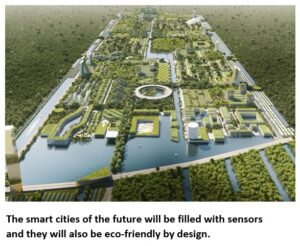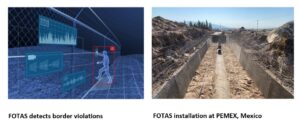Future of Cities and FOTAS

The rapid increase in human population and humanity’s ever growing consumption of resources forced us as a whole to reconsider how we live in cities. The city could be seen as a living organism

So, how are we going to make cities smarter? The answer to this question in short is with data. Data is the basis of the technologies used today to make a system smart. Smart Cities will be equipped with sensor systems from top to bottom. This is where Internet of Things (IoT) comes into play. With IoT sensors, data will be collected using wireless technologies such as NB-IoT, LORA, SigFox, 4G-5G and even 6G, but ultimately this huge data has to be transmitted to a cloud system. It seems inevitable that a fiber-optic network will be used to transmit data quickly. The fiber-optic network will grow exponentially as the city gets smarter and the residents use the technology more.
In addition to the use of fiber optics in data communication in Smart Cities, its use as a sensor will gradually increase. Today, Fiber Optic Sensors can detect many physical quantities such as temperature, pressure, strain, vibration, sound, speed, acceleration, rotation, or chemical quantities such as the concentration of a substance in a liquid. Fiber optic sensors, which are basically based on measuring the interaction of the quantity to be sensed with the light passing through the fiber, offer advantages over other types of sensors for remote sensing, due to their small size, not requiring power at the point of detection, being unaffected by conditions such as high temperature, high vibration, and humidity. This also means that; in the future if we want to build a smart city in space which is considered to be the harshest environment there is; we already have the necessary sensor technology to employ there.
While fiber optic sensors can detect at a single point, a long sensor can detect from every point of the fiber optic line. Such applications of fiber optic sensors are called distributed fiber optic sensing systems. In this way, every point of the optical fibers, which are kilometers long, acts as a sensor. You can imagine this by measuring thousands of thermometers, thousands of microphones, thousands of strain gauges all together on a fiber optic line. Thanks to this feature, distributed fiber optic sensing creates an alternative that can replace thousands of IoT sensors. In this way a smart city will have the long, “vein-like” structure for sensing everything going on in public buildings, in traffic, in water pipes and electrical grid. With this, maintenance costs and the time allotted to detecting structure hazards will be reduced.

The advantages of smart cities make them irresistible for future plans. It seems our lives are getting more and more intertwined with the technology as years pass. Some companies are already started to work on the technologies that could be used in smart cities. One of those is SAMM Teknoloji; a company that has started in 2003 in Gebze Industrial Area in Kocaeli, Turkey as a Trade Company. After gaining experience in telecom, company took the name SAMM in 2010. In 2015, the company opened a production facility of 7000 m2 in Gebze. After this, an R&D center opened along with an MPO/MTP assembly line in 2017. In 2018, SAMM acquired Quality System certifications of Oracle Cloud (CRM) and assembled the fiber optic cable production lines. In 2020, SAMM decided to get bigger business-wise and established a second production facility of 6000 m2 and also opened an Office in Germany.

SAMM Teknoloji has developed a product with artificial intelligence that could be the solution for the needs of a smart city. It has produced a distributed acoustic sensor called FOTAS; which uses a long fiber optic cable as a sensor to detect the anomalies by using the impact of pressure waves on the fiber optic cable. The whole cable is used as a sensor and the signals that are coming from the sensor is classified by the algorithm. The artificial intelligence can be trained to identify different anomalies for different scenarios and FOTAS has cables with different lengths for different scales. Some cables could be used for just one building while others are more suitable for covering a whole area of urban electrical grid. Whatever the case is; FOTAS has the necessary utilities as a distributed sensor.
FOTAS also has another interesting use. Did you know that you could use a fiber optic cable as a perimeter security element? Well, FOTAS does just that. Smart cities will need a robust monitoring system for their buildings and infrastructure grid. This system will watch the city both for maintenance and security purposes. FOTAS has already started doing this with an oil and gas company named PEMEX in Mexico. FOTAS is installed there for gas leak detection. In the future, when smart cities become a reality, FOTAS will be used to watch over the whole city.




